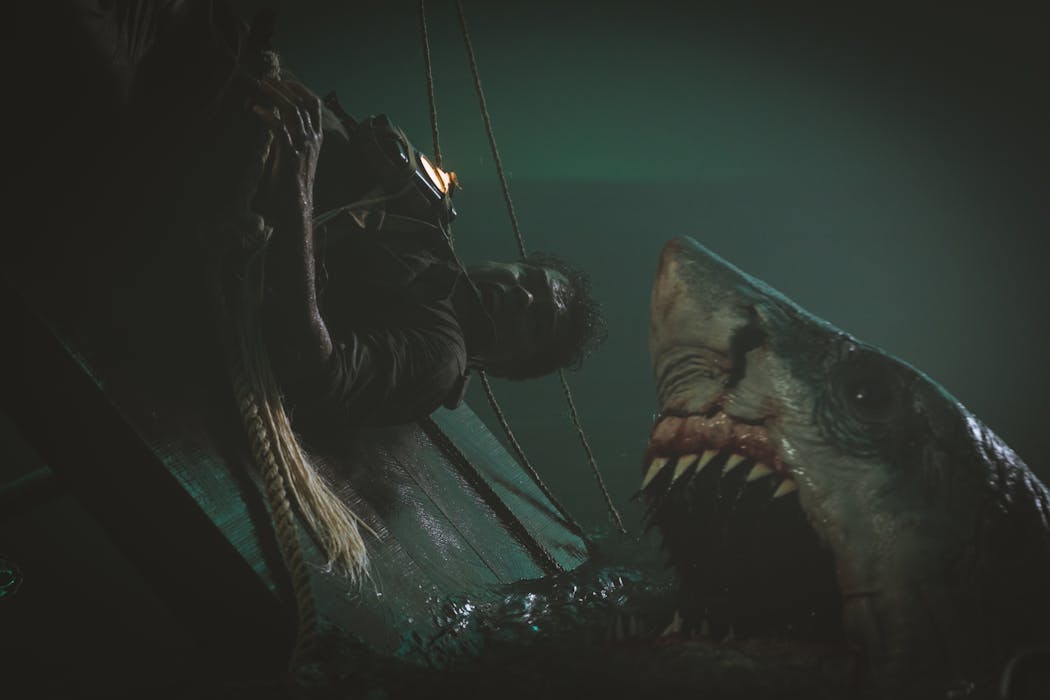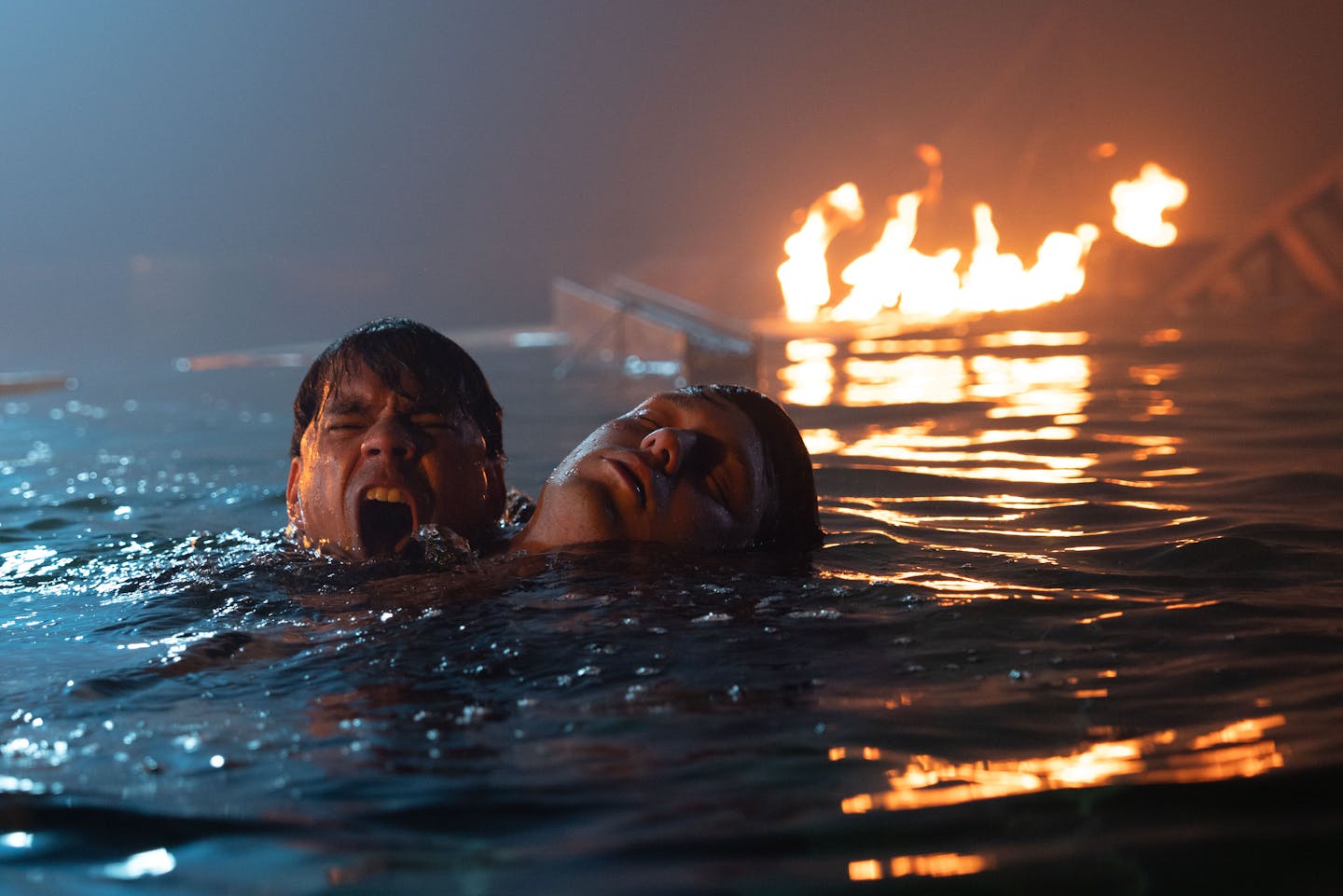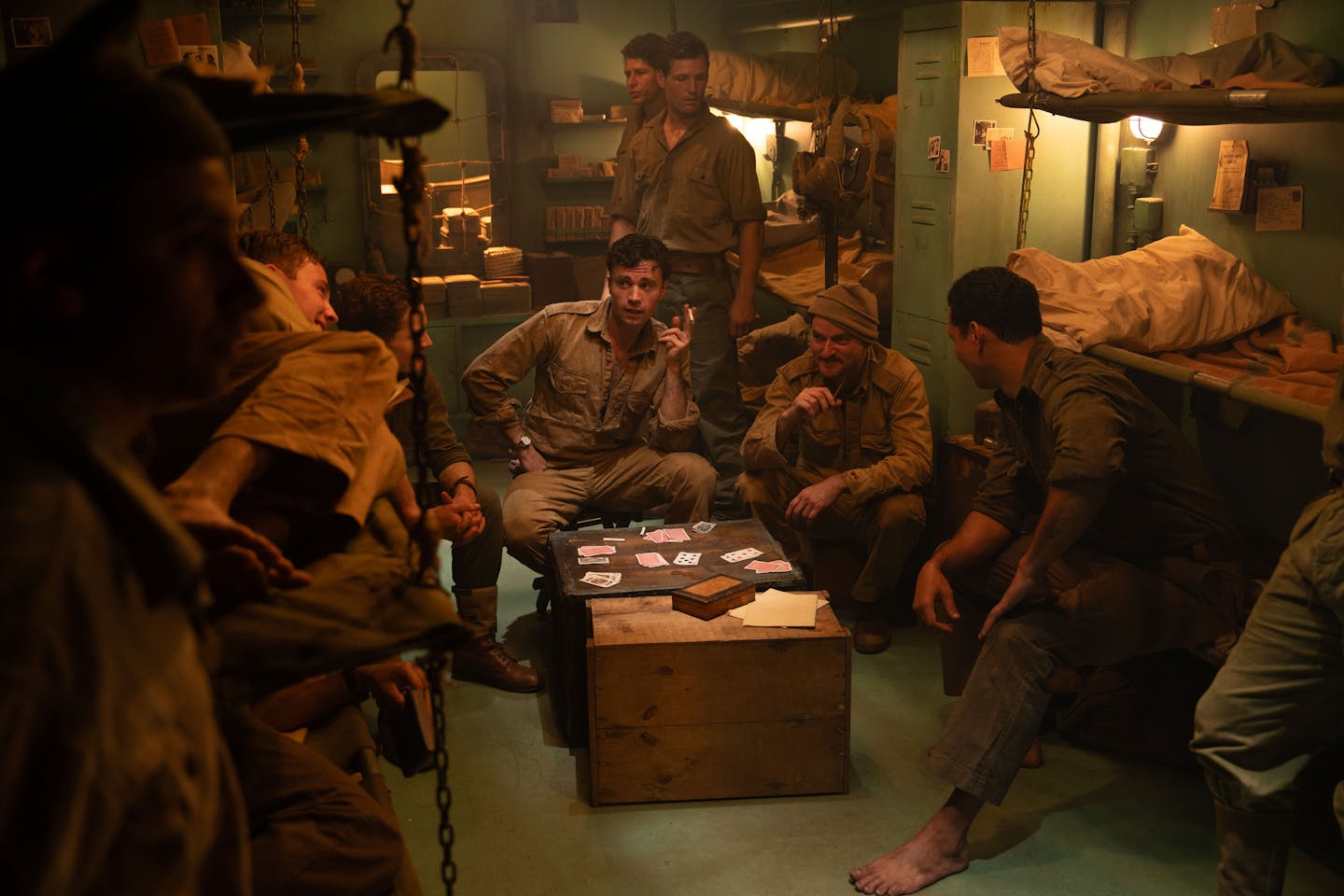
Australian writer-director Kiah Roache-Turner’s new film, Beast of War, is a unique blend of war and shark flicks of the “survival horror” kind. And while it’s a short, sharp, gory joyride (87 mins), it may leave viewers wanting more.
Set in 1942, a warship full of Australian soldiers is suddenly sunk on the Timor Sea. Seven men cling to a makeshift raft to survive.
Our hero is an Aboriginal private named Leo (Mark Coles Smith). Among the soldiers are Will (Joel Nankervis), Des (Sam Delich) and Teddy (Lee Tiger Halley). As Japanese fighter planes strafe from above, the soldiers must defend themselves against a giant great white shark circling below.
Watching Beast of War in the aftermath of a tragic shark attack in Sydney adds a melancholic dimension at first, but its string of jump-scares and shots of busted-up and shark-bitten bodies soon distracts.
That’s the power of such survival horror films – particularly where killer sharks are involved. It’s not that these attacks aren’t serious and traumatic; it’s more that these films, while scary, are also schlocky and over-the-top enough to not be too troubling.
We stay on the surface of the terror
Shark films are a well-established genre. The unnerving tension of the looming shark attack in Beast of War reminds me of The Shallows (2016), in which a young woman surfing at an isolated beachbreak must take refuge from a monster shark on a rocky outcrop. A similar anxiety could also be felt while watching Open Water 2: Adrift (2006), despite there being no actual shark attack in it.
Beast of War, however, is visceral. It gushes with affect. Its stylistic trait is close-up after close-up of soldiers’ faces, each one brutal in conveying pure horror.

Of course, mateship and survival are prominent themes, too. The men must fight to save each other, and (sometimes questionably) themselves. The soundtrack is somewhat reminiscent of the Jaws theme: there is a kind of fuzzy, prolonged heartbeat sound, a motif that ominously reminds us of the circling danger of the “beast” below.
As you watch, you become absorbed in the shock and horror of it all, but without getting too drawn under. As soon as there’s a moment’s calm, literally rendered onscreen in the lulls between the shark’s attack, you’re jolted with something scary, surprising and gruesome.
The narrative is punctuated by continuous surprises that challenging the soldiers’ endurance, intensifying the danger of the shark’s presence, and making the ramshackle raft seem increasingly precarious.
There is also a noticeable absence of establishing shots, typically used in film language to contextualise what we’re seeing in a broader narrative context. This means we tend to stay on the surface of the terror. We can maintain the horror at a recreational distance.
Could it go deeper?
Beast of War is a film that plays creatively with genre.
Another example of this is Roache-Turner’s Wyrmwood: Apocalypse (2021), which crosses Australian outback action (such as the Mad Max films) with the zombie subgenre.
Beast of War follows suit by blending second world war aesthetics and shark survival gore. It’s also a very Australian film. Alongside themes of mateship and racism experienced by Indigenous soldiers is over-the-top Aussie slang. In one comical line, Des points a puny rifle at the enormous shark surging towards them and yells: “Come on you toothy bastard!”

There are moments of beautiful cinematography by Mark Wareham. One example is the shot of the sky, high above the clouds, in the darkness of the soldiers’ menacing first night. Sombre grey clouds, angry with storm, are momentarily lit up by bolts of warm yellow lightening.
This shot almost functions as a special pause in the action – a space for deeper contemplation – but doesn’t quite make it.
Moments like this are too short-lived to encourage a finer sensitivity to the film’s emotional and poetic moments. No sooner have they happened that we’re back to charging through event after action-packed event of surprise, shock and gore.
Is this a criticism? Not really. Beast of War does deliver what’s written on the can, and it’s fair enough to overlook the rest.
Beast of War is in cinemas from today.
This article is republished from The Conversation, a nonprofit, independent news organization bringing you facts and trustworthy analysis to help you make sense of our complex world. It was written by: Roger Dawkins, Western Sydney University
Read more:
- Bruce Beresford’s The Travellers blends opera and the outback in a heartfelt story about homecoming
- Brides offers a unique insight into the roots of far-right activism and Islamophobia in Britain
- I research Tourette’s – I Swear is an unflinching yet empathetic portrait of life with this condition
Roger Dawkins does not work for, consult, own shares in or receive funding from any company or organisation that would benefit from this article, and has disclosed no relevant affiliations beyond their academic appointment.


 The Conversation
The Conversation
 IMDb Movies
IMDb Movies 11Alive Crime
11Alive Crime VARIETY Film
VARIETY Film The Rink Live
The Rink Live MLB
MLB Fox 11 Los Angeles Sports
Fox 11 Los Angeles Sports MENZMAG
MENZMAG Mashable
Mashable